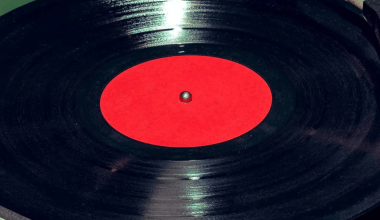Finding a song with just a hum may sound magical, but technology has made it a reality. Imagine hearing a tune in your head, unsure of the lyrics or the artist. All you have is the melody, but that’s enough. Apps and tools now enable you to and find the song you’re searching for effortlessly.
The act of humming is universal. It transcends language barriers, connecting us through melody. Whether you hum in the shower, while working, or on a walk, your mind often plays a soundtrack of tunes you love or fragments you wish to identify. With advancements in music recognition, humming is now a reliable method to pinpoint songs.
Why Hum to Find a Songs?
When you can’t recall a song’s title or lyrics, humming is a simple solution. It’s natural to remember melodies more vividly than words. The hum captures the essence of the song—its rhythm, tone, and soul. By simply recreating what’s in your head, you can connect to tools designed to decode your hum and find a match.
Apps like Shazam, SoundHound, and Google hum search have revolutionized this process. Their algorithms analyze your melody, compare it against vast music libraries, and return results within seconds. This innovation makes humming a powerful tool for music discovery.
The Joy of Discovery Through Hum
Humming brings an element of personal connection to music searching. It’s your version of the song’s essence that the system processes. There’s a unique satisfaction when your hum successfully identifies a song. It’s like solving a riddle only you could crack. The thrill comes from both the discovery and the nostalgia tied to the music.
Moreover, these tools don’t just help you find a song—they also expose you to new music. If your hum is slightly off, the app may still suggest similar tracks, broadening your playlist. This happy accident makes the journey as rewarding as the destination.
Extended Play and Humming
Extended play (EP) collections often feature tracks that are less mainstream. These songs can be harder to identify if you only have a melody in mind. Humming becomes particularly useful here. Many EP tracks are beloved but don’t enjoy the recognition of chart-topping singles. Using a hum to find these hidden gems ensures that no melody remains a mystery.
EPs also tend to offer rich and experimental sounds, giving listeners a unique experience. When these tunes stick in your mind, tools that recognize hums become invaluable for rediscovery.
Selling Music on Beatport
Beatport is a popular platform for electronic and dance music. Artists who sell music on Beatport often produce tracks that lean heavily on beats and rhythms. These are the types of songs you might hum or tap out rhythmically when trying to recall them.
Humming provides an intuitive way to rediscover tracks from niche genres that Beatport specializes in. Artists and listeners alike benefit from these innovations. By making their music searchable even through humming, producers can reach wider audiences who might otherwise struggle to find their work.
How Music Recognition Tools Work
Behind the magic of finding a song with a hum lies advanced technology. These tools analyze the pitch and rhythm of your hum, then match it with songs stored in a database. The algorithms don’t require perfect accuracy. Even if your pitch is slightly off or you miss a beat, the system still identifies similar songs.
Google’s hum-to-search feature is a frontrunner in this space. Just open the Google app, tap the mic icon, and hum. Within seconds, you receive a list of possible matches. It’s simple, effective, and widely accessible. SoundHound takes it a step further by allowing you to hum or sing a fragment. It then identifies the song and even provides lyrics and artist details.
Expanding Playlists Through Hum
Humming isn’t just a retrieval tool—it’s a gateway to new music. When you hum, the system might introduce you to tracks you never intended to find. Similar-sounding songs often appear in the results, offering new additions to your playlist.
For instance, a hum might help you find an acoustic version of a or a remix you hadn’t heard before. This spontaneous discovery broadens your musical horizons, helping you appreciate different styles and artists.
Accessibility and Inclusivity
Humming is inclusive. It requires no technical knowledge, perfect memory, or specific skills. Everyone, regardless of language or musical ability, can hum. This makes hum-to-find technology a universal tool for music lovers.
For those with disabilities, this feature can be life-changing. It eliminates barriers to accessing music, offering a voice-activated, melody-driven solution to finding songs. Humming brings music closer to everyone, ensuring no tune is ever out of reach.
Looking Ahead: The Future of Humming and Song Discovery
As technology advances, the accuracy and speed of hum-based search tools will improve. Future updates may include integration with streaming platforms, allowing users to add identified songs directly to playlists. AI might also evolve to identify multiple tunes in one hum, catering to complex medleys or layered melodies.
The role of hum recognition in live music is another exciting possibility. Imagine attending a concert, hearing an unfamiliar opening track, and being able to hum it later to discover the artist. This seamless integration of live and digital music worlds will transform how we connect with tunes.
Final Thoughts
Humming is more than a casual pastime. It’s a bridge between fleeting melodies and tangible music. With tools designed to recognize hums, your favorite songs are always within reach. Whether it’s a nostalgic track from childhood, a fresh beat heard in a café, or an experimental piece from an EP, humming ensures that no song is ever truly lost.
For further reading, explore these related articles:
- Spotify Creator: Unleashing Your Musical Potential in the Digital Era
- Complete Guide to Ditto Music Login and Managing Your Account
For additional resources on music marketing and distribution, visit DMT Records Private Limited.






